BhutanMapMay 5–8, 2007 Far, far away in the mountains, squeezed between China and India, sits a small monarchic Buddhist state called Bhutan. 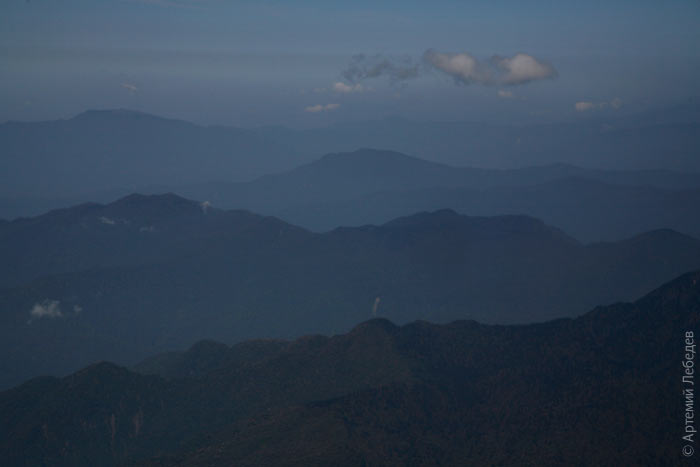 Bhutan is populated by open and welcoming people who love tradition and cannot abide the Nepalese. The monarch helps the Bhutanese to uphold their traditions (otherwise they would’ve drunk and smoked themselves silly a long time ago). For instance, take the national sport, archery. There are archery grounds everywhere, as long as a football pitch and as wide as a bowling alley. When the arrow hits the target (from a distance of one hundred metres, nothing to sniff at) the archer’s support squad, who are there to see how well he’s doing, runs out and performs a song and dance number with more or less the following lyrics: «Woah, woah, Pete pulled the string and hit the target, he could’ve made the bull’s-eye, but he didn’t, nonetheless, we’re still terribly proud of him, go Pete». 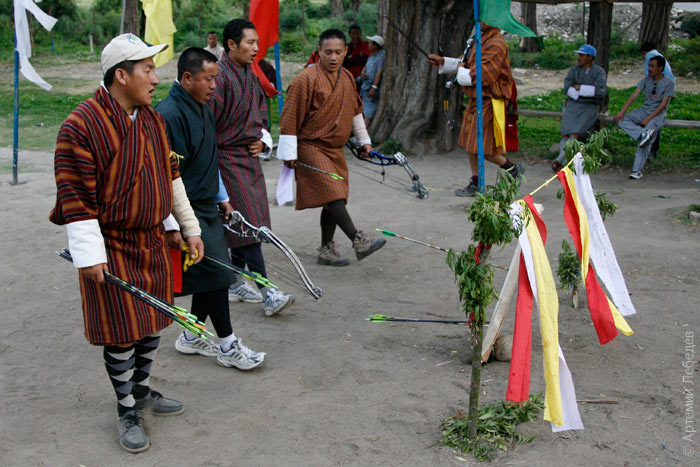 Many Bhutanese wear their national dress. The monarch cares about the preservation of their culture — you don’t have to wear a striped or tartan blanket, but if you don’t then you won’t be able to get an appointment with the local housing authority, or with any other government agency for that matter. By the way, TV was still banned here just 10 years ago. This is the second time in my life that I’ve encountered the optical effect called a «halo» (the first time was in Greenland): 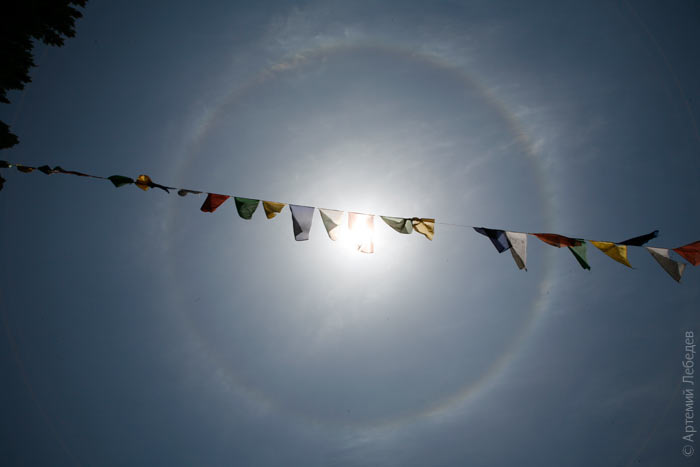 There are lots of bins everywhere with «don’t forget about me» and «use me» signs on them. 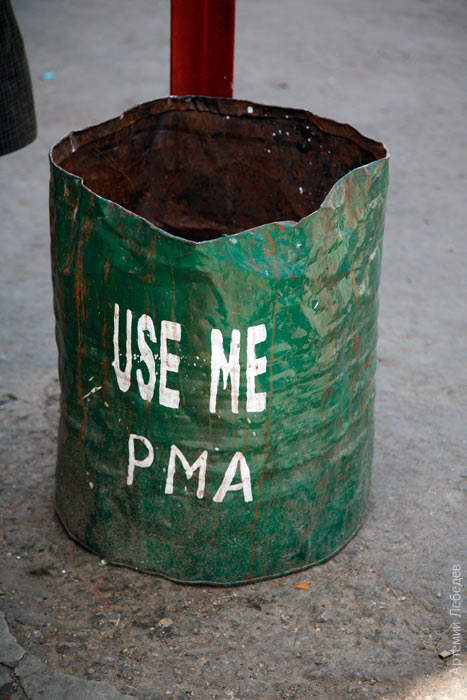 Since I hadn’t smoked for about three weeks by the time I got here, it took me a while to notice that no one was puffing away anywhere and that there weren’t any cigarette butts on the streets. It turns out that a blanket ban on smoking was imposed in the country a few years ago — it is a monarchy after all. Moreover, all religions except Buddhism are banned. 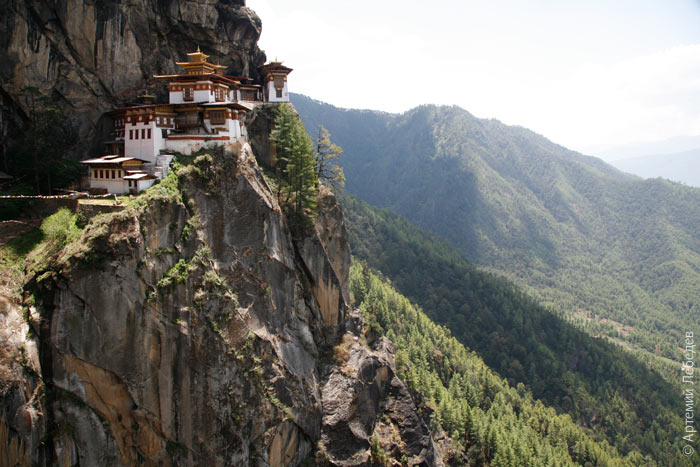 Car registration numbers are cut out of film and then stuck onto white plastic, simple as that; some stick them onto reflective tape — because it looks nice. The number plate fonts are fairly varied — everyone uses whatever they have to hand. The top line is in the Bhutanese script, indistinguishable from the Tibetan script. 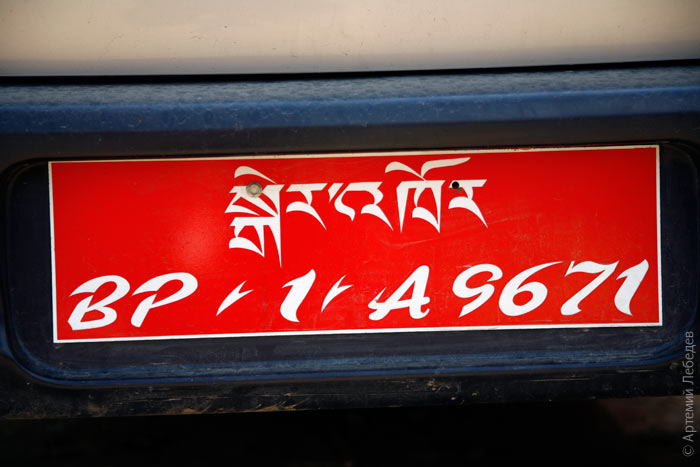 Road signs are hand-drawn. 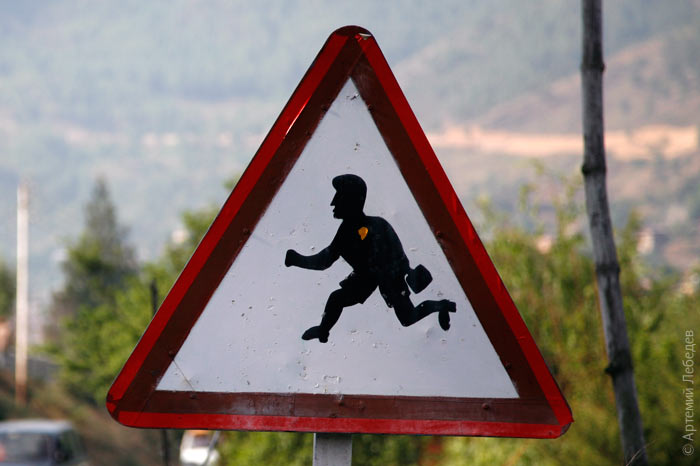 And often come with a signature. 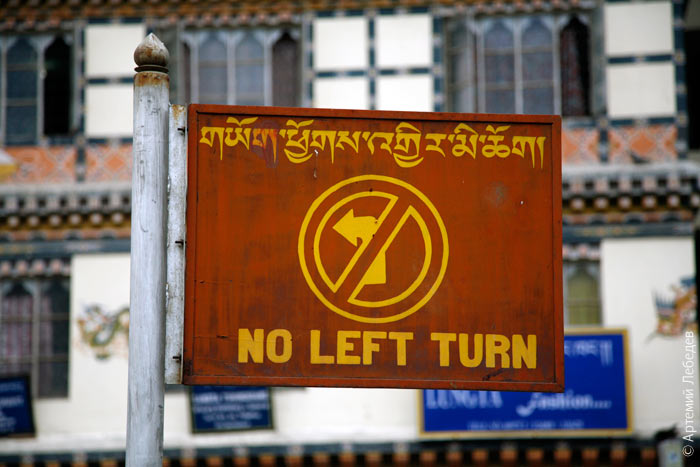 In principle, there’s nothing in Bhutan that’s its own, except culture, that is. Practically everything is produced in India, even their national dress, and even the manhole covers with «swastika» written on them: 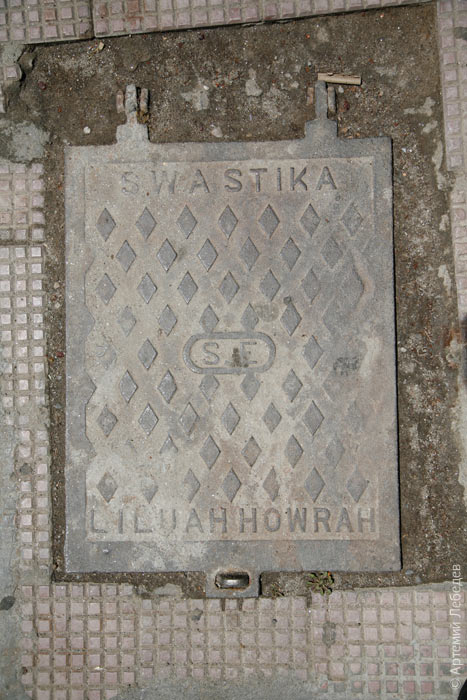 All of the shop signs in the country are identical — wooden with a dark blue (red is much less common) background and white text. Be it an internet café, a restaurant, it doesn’t matter. There are no neon coca-cola bottles on roofs, no Godzilla-sized plastic telephones in the streets. 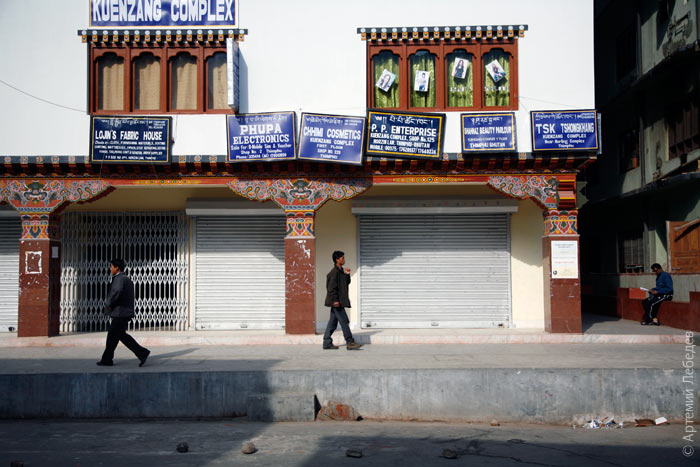 For some reason Bhutan is considered to be difficult to get to. Before this trip I’d heard that apparently there was a quota on foreigners entering the country, maximum 600 per year. All of this is bollocks — if you want to visit, all you have to do is hop on a plane (admittedly, there aren’t that many tourists here, which is great). The only thing that might stop you from coming here is your own greed. Many would prefer lolling about on the Turkish coast like rotisserie chickens over a trip to the land of gingerbread houses. 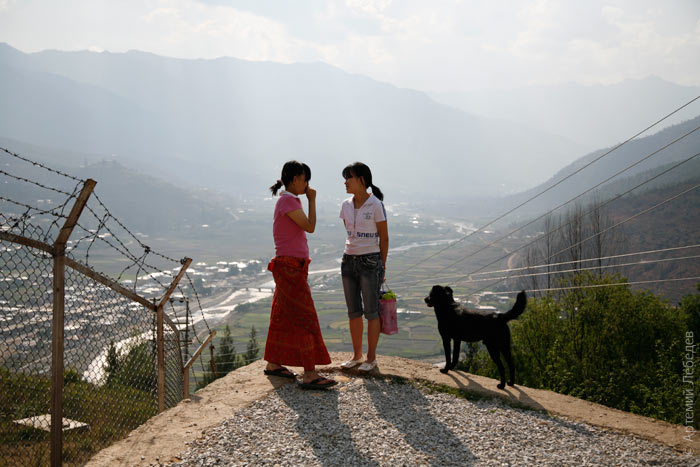
Life  But in the mid-seventies the monarch got to thinking — why is it that my people lead a somewhat humdrum existence? So he ordered for all houses to be decorated. As a result all buildings here are— from the transformer substations to the airport terminal. The main motif is ornamental, if you like you can also add animals, which serve all sorts of purposes, as well as amulets. Decorating your house doesn’t come cheap, so people compete to see who has the most lavish fripperies. 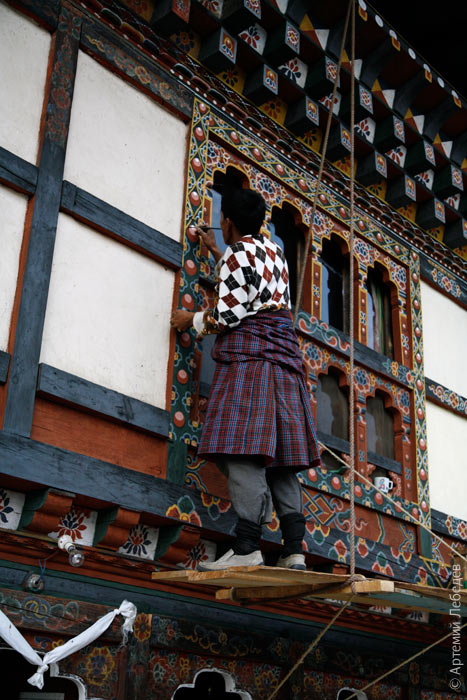 Every single building looks like a Mstyora or a Palekh lacquered miniature. Here is one of the buildings on the territory of the royal residence in the capital, Thimphu: 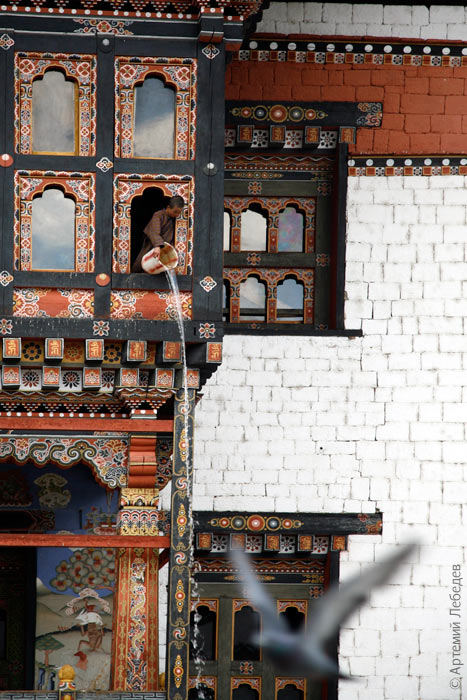 And here’s an ordinary house in the town of Paro: 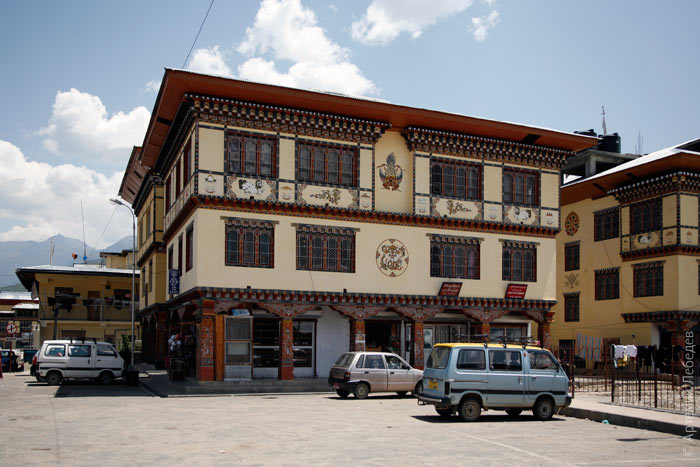 Everything is painted, regardless of what it is. 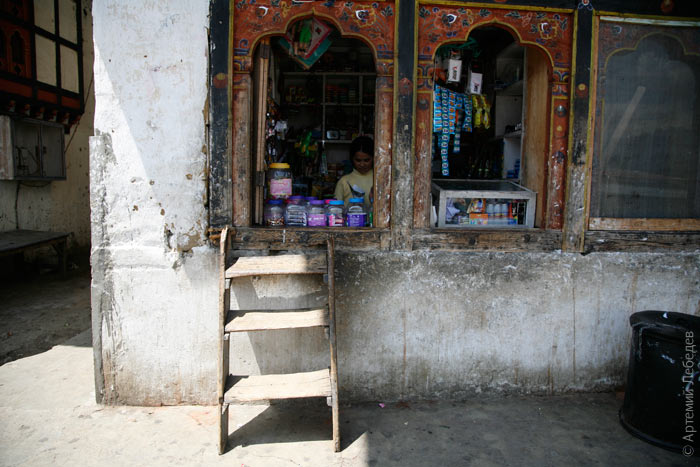 They used to build the houses out of some sort of sandstone they had to hand, which is why the houses didn’t last very long. These aren’t medieval ruins you see in front of us — these structures date back to the late 1960s: 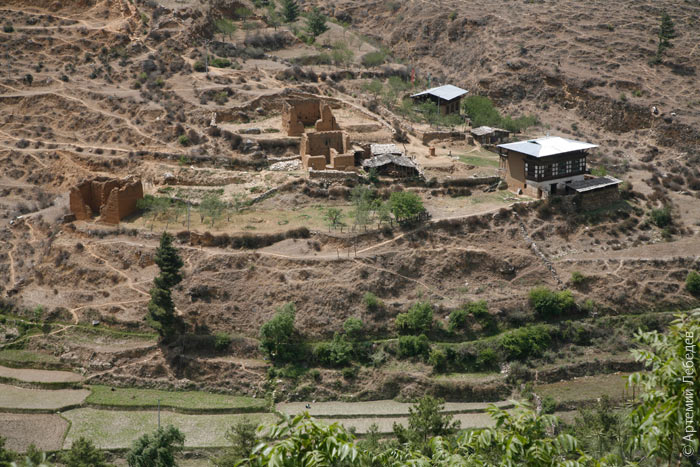 One of the distinguishing traits of local culture is a legend about some saint who successfully fought off evil spirits with his own penis some five hundred years ago. That’s why in the villages there’s a penis drawn on every single house. 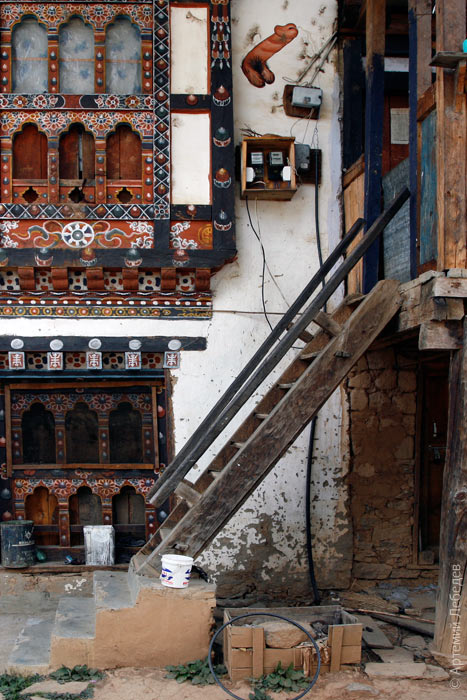 They’re a tad embarrassed to do the same in the cities, but they do still draw them, especially off the main streets. 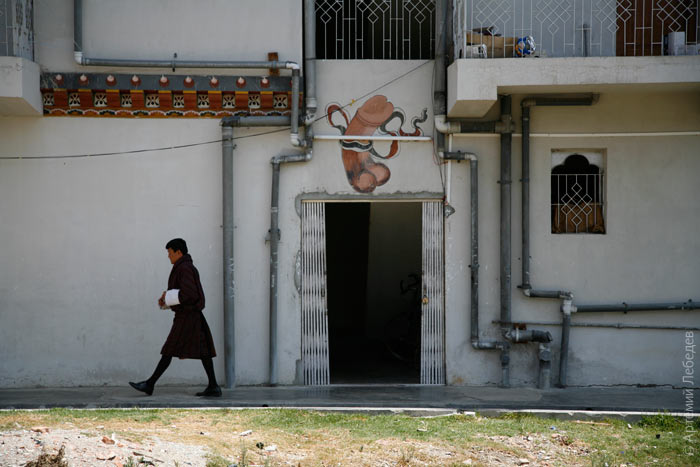 No one feels discomfited by these wall drawings because they perform two vital functions. First of all, they protect family members from evil spirits: 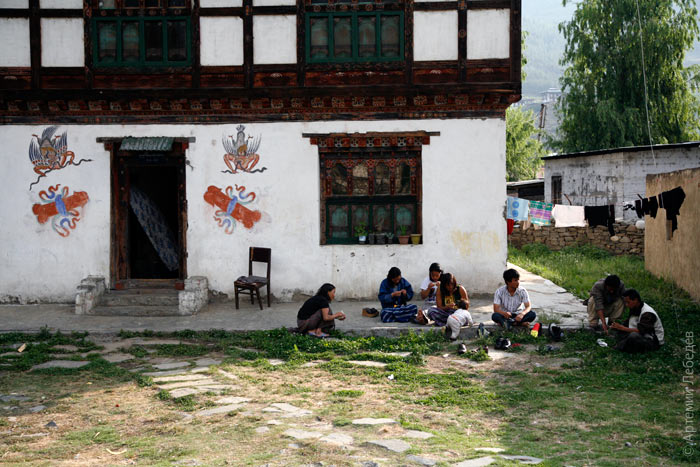 Second, they ward off all kinds of rumours and gossip. This is the only country in the world where I didn’t have to draw anything on the walls. 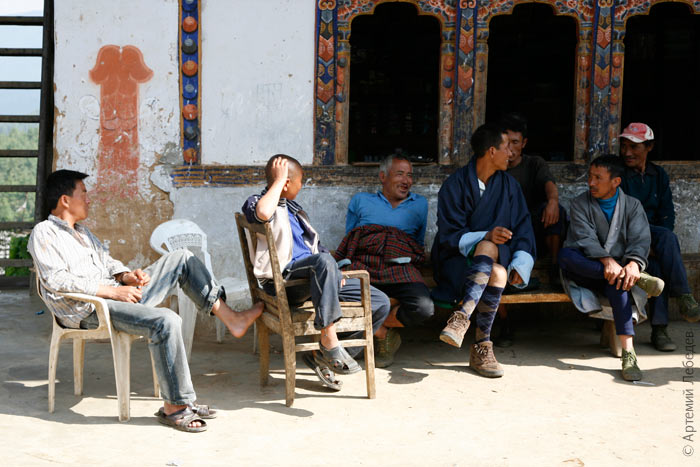 The wastewater drains run down the outside of the building to make it easier to repair them, as well as to avoid a leak flooding the neighbours’ place. 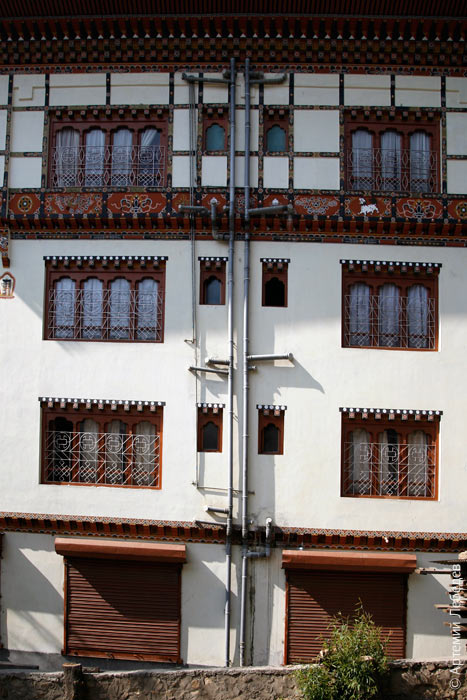 The only thing that’s unchanged for centuries is their actual way of life — the village way of life, that is. In the villages houses must have three storeys. On the ground floor there should be a barn. 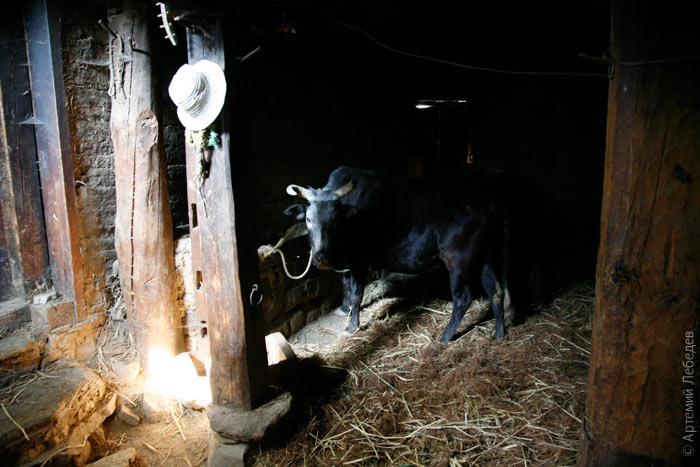 On the second — a kitchen, 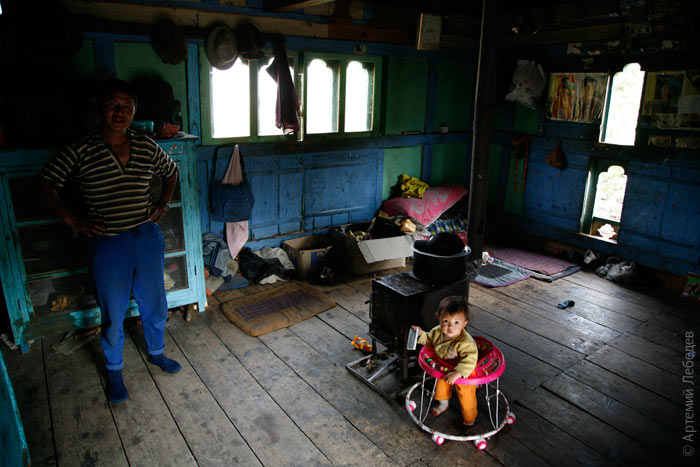 a bedroom, 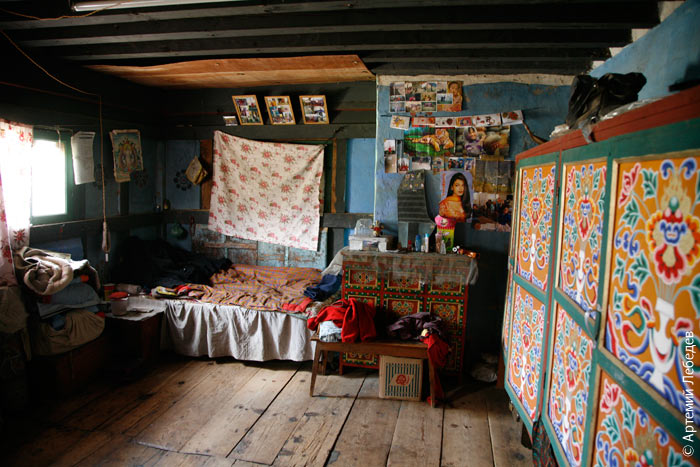 and the most ornate room, reserved for displays. 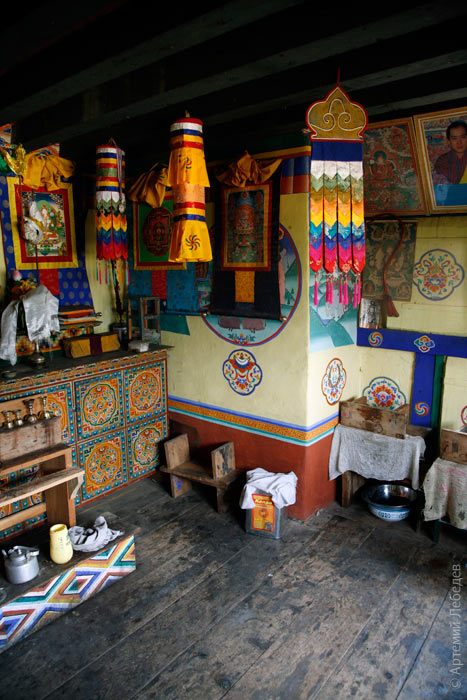 The third floor is an attic for drying hay. No one keeps hay in the attic in May, but you can keep a stuffed calf there. 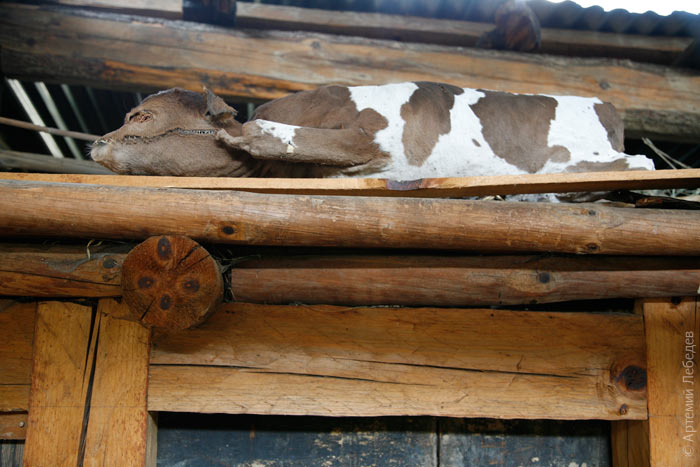 The owner of the house was sitting on the front porch, together with her granddaughter and a friend. In Bhutan the eldest daughter inherits the house — the son is supposed to either build something himself or move in with his lady.  Chickens run around in the street, their arses already plucked. You can probably catch them by the tail and dump them directly in the stock pot. 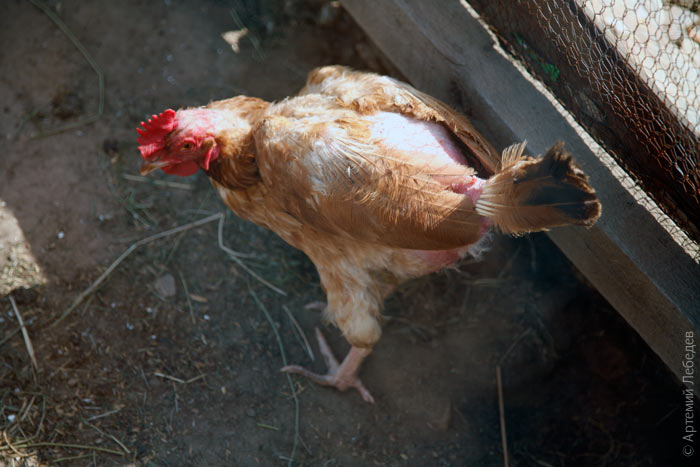 The only flat bit in the country was used to build the airport, hence the terraced farmland. 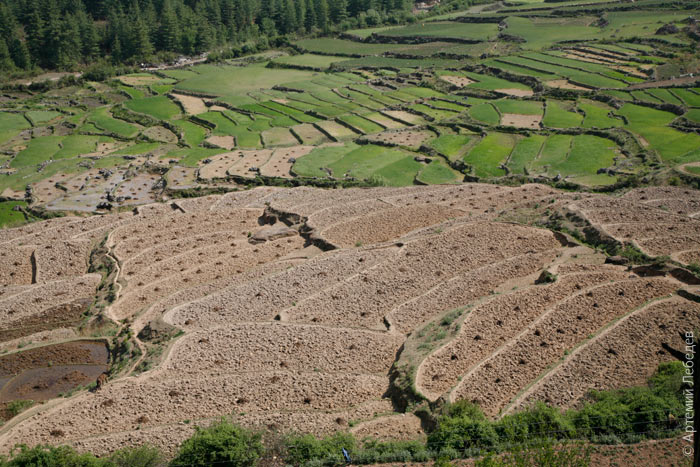 A little while ago I got into the habit of getting my hair cut anywhere except Moscow. After all, an unfortunate outcome can always be evened out with hair clippers. So far, I’ve had lady luck on my side. The hair resting on my back is what grew out following haircuts I got while in the UAE and on Taiwan. A picture of the King of Bhutan hangs next to the haircut template pictures. 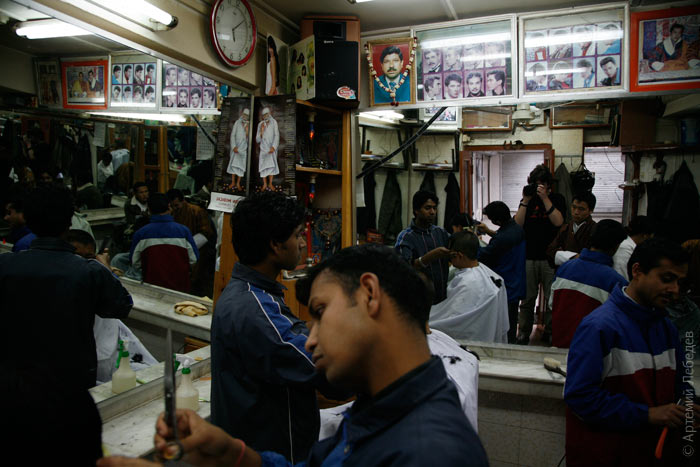 Since I’m a foreigner, they overcharged me by about $1.30. The hairdresser works so quickly that he has to wear razor blade wrappers on his fingers — otherwise he’ll get blisters: 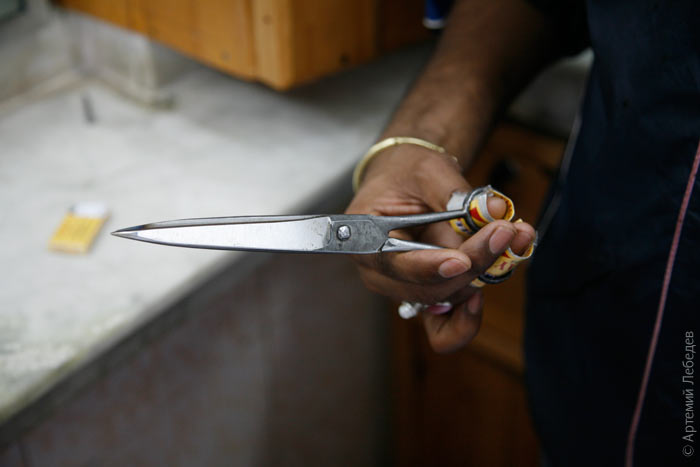 On the weekends the monks are allowed to go into town, which they’re very pleased about. They get drunk and meet up with their lady friends, although they’re not supposed to. If a monk goes completely off the rails and wants to disrobe, he has to pay the monastery a fortune — two hundred dollars. 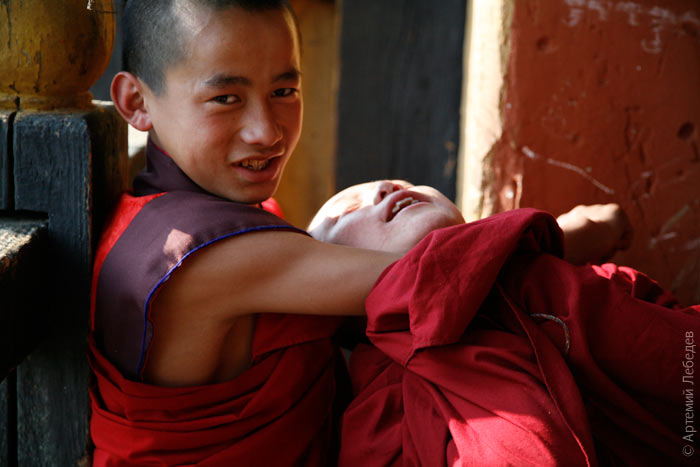
Death For example, you’ve gone and died. Your relatives will visit an astrologer, who will tell them where they have to go to put up 108 extremely tall tree trunks bearing white flags. Typically, it’s a spot in the mountains. So the relatives go there, spend the entire day felling trees, planing branches, and hanging up flags. The flags must be white and have no images on them. The flags have prayers printed on them, which the wind will read off as it blows, making the cloth flutter the breeze. 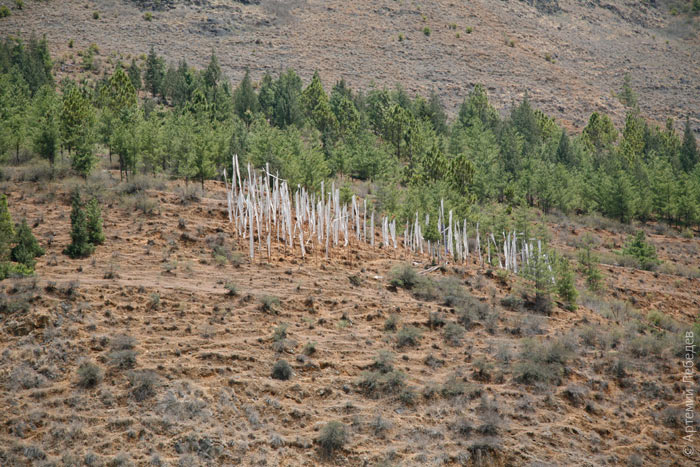 If there are few relatives, tough luck, they’ll have to spend several days putting up the masts. I’m not sure to what extent local astrologers are sympathetic to personal circumstances, but you see flags both next to roads and in the middle of impenetrable forest high up in the mountains. 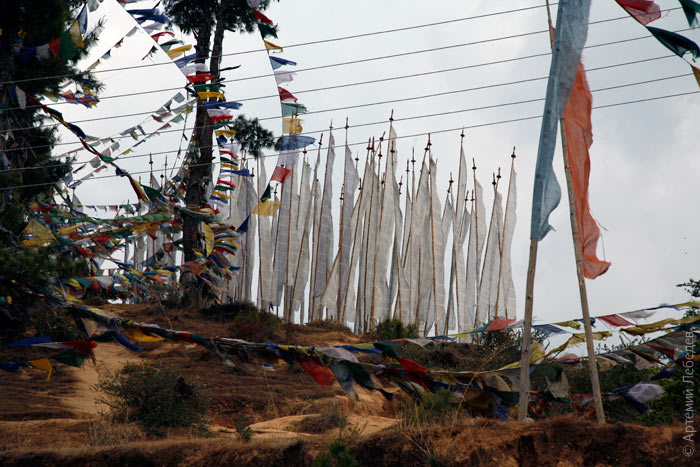 Coloured flags have nothing to do with the deceased — they put them up at will, to summon luck and happiness. 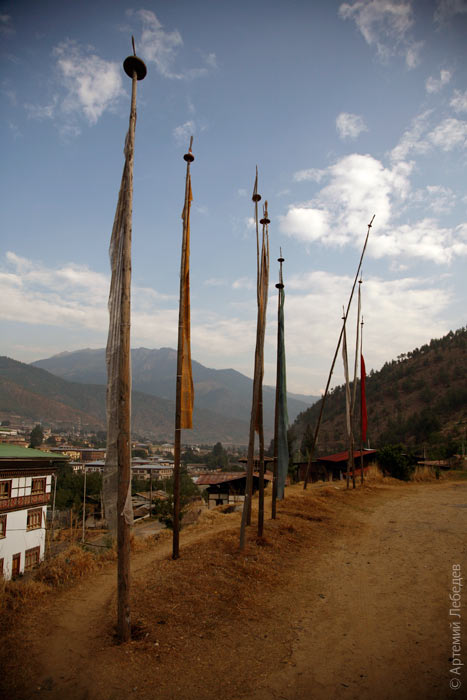 Aside from the colour, the other thing that sets them apart are the pictures punctuating the prayers. 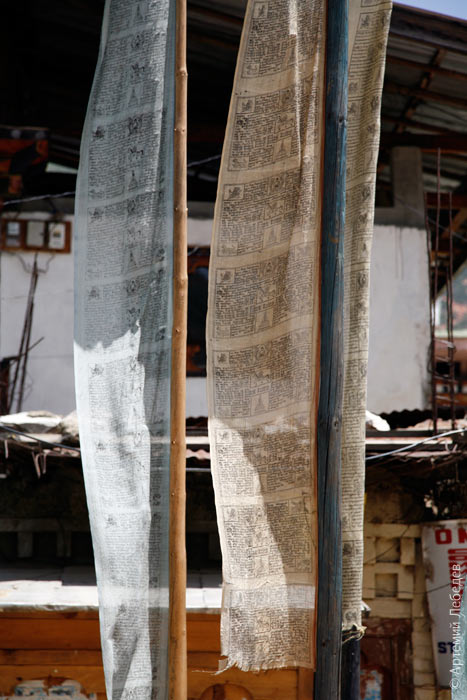 I got distracted there. The most interesting part is what they do with the deceased. The corpse, it goes without saying, must be cremated (did you honestly think that a mountainous country would have a tradition of burials — there are cliffs everywhere). The resulting ashes are mixed with white clay, divided into 108 portions and used to make little stupas, which are then fired and painted white and gold. A piece of paper bearing the name of the deceased is placed in each stupa. The stupas are then placed in mountain gorges, so that the rains don’t wash them out right away. Here’s someone’s grandma (the sign on the wall is just a mantra, pay no attention to it): 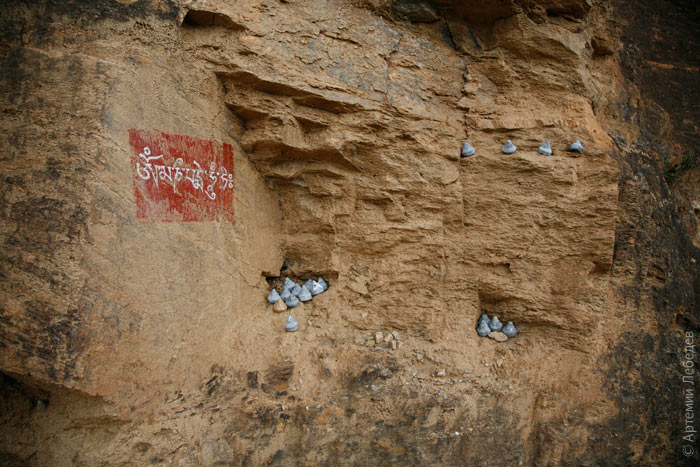 Here’s someone’s first cousin once removed: 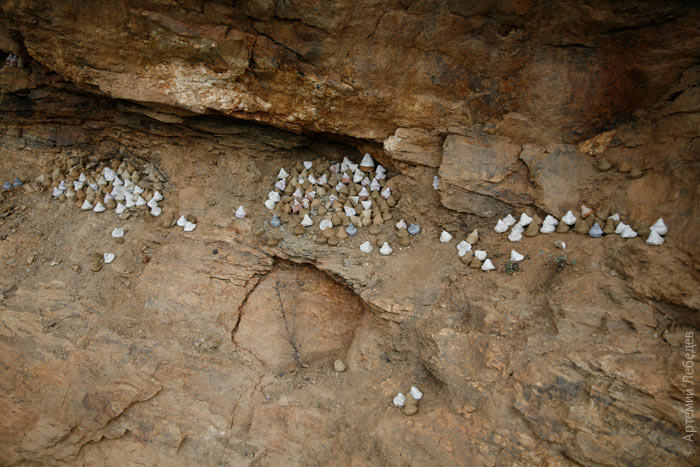 Of course, a story about Bhutan would not be complete without mentioning that every single house without exception must have a white flag on the roof — that way, everything will be alright. 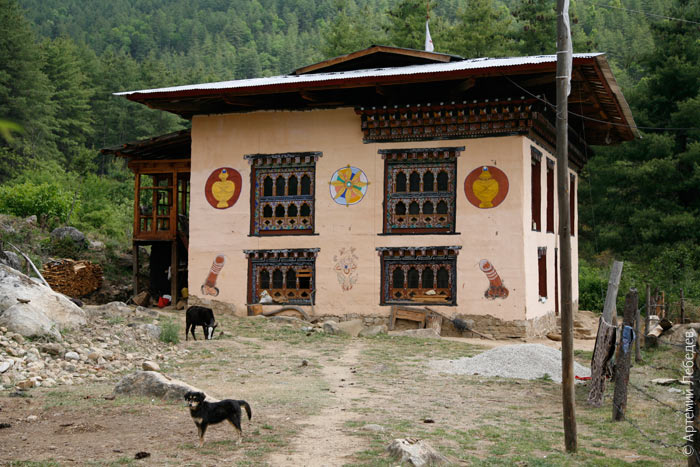 |